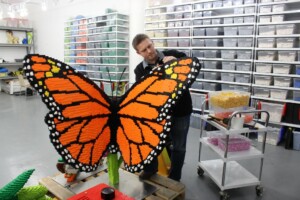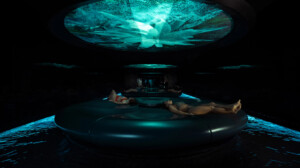Cloward H2O, an expert in aquatic design, has explored approaches to secondary disinfection systems (SDSs). The firm has been sharing its insights into the benefits of ozone SDS technologies, with learnings from the aquarium industry.
Research on the methods of prevention and treatment of pathogens is well-established, with processes in use at facilities such as pools, drinking water treatment centres, sewage treatment, and industrial applications.
The Model Aquatic Health Code (MAHC) outlines the importance of secondary disinfection systems and recommends two technologies: ozone and UV.
Benefits of ozone
Ozone is the most effective oxidizer and sanitiser that is safe to use for both humans and aquatic life.
It is used within the aquarium industry and Aquatic Animal Life Support Systems (LSS), in conditions which are similar to those in commercial swimming pools and waterparks. The same principals of filtration and circulation apply to both kinds of applications.
However, LSS engineers are not able to fall back on chemical treatments which would harm the aquatic creatures, or close the pool. Instead, in these settings it is essential that engineers can rely on high-quality equipment, redundancy, high turnover rates, mechanical and biological filtration, ozone, and a vigilant husbandry team to monitor and maintain a healthy environment.
The aquarium industry uses ozone as its primary sanitiser and oxidizer. Ozone has the unique capacity to achieve high microbial kill rates within a treatment system while leaving no adverse residual effects in the exhibit waters and has supported the establishment of large aquarium facilities throughout the world.
Because of its significant oxidation properties, ozone also plays a vital role in reducing organic load levels. It improves water clarity by binding smaller contaminants into larger, filterable byproducts.
Whilst UV sterilisers are being used more widely in both commercial swimming pools and LSS, it does not provide the aquarium industry with the significant operational benefits that ozone offers. The capital costs for UV are lower than ozone, however, UV does not offer a saving over time. It is also not the most effective method of pool sanitation and is consistently outperformed by ozone in third-party validation testing.
Ozone offers many benefits to a sanitation system and should be used in combination with residual sanitiser, which ozone cannot supply because of its rapid reaction rate, and mechanical filtering.
Learning from LSS
LSS systems usually feature a turnover time that is significantly less than that of a swimming pool, and even less for smaller or more packed tanks. There is a significant organic load in these living spaces that needs to be taken into account, unlike in a swimming pool, which is meant to be a “sterile system. This follows the general rule that higher turnover rates result in cleaner water and reduce the chance that pathogens will be able to get past the pool’s defences.
Biological filtration is another type of filtration used in LSS. In essence, bio-filtration is a microbial environment where beneficial bacteria are permitted to proliferate and consume weak and outnumbered pathogen organisms. All surfaces inside the system and tank become home to these helpful bacteria, as in a lake, stream, or the ocean, because there is no chemical residue to inhibit their growth.
“As we consider the design of a pool treatment system we must consider the lessons learned from the aquarium LSS. This may require the designer to increase design filtration rates beyond code requirements and above accepted minimums, utilizing filtration sized larger than is customary,” says the firm.
They recommend that in every project, particular attention should be given to secondary sanitation and oxidation treatment. Through their interaction with water monitoring systems, these secondary sanitation technologies will provide more precise control over water quality parameters. This provides the operator with the means to monitor and maintain excellent water quality with the least amount of intervention and work.
Cloward H2O is a member of the Model Aquatic Health Code Council and collaborates with other members to assure swimmer and animal safety. Cloward H2O has over 45 years of experience working with bacteria and virus disinfection technologies. Every aquatic project is part of its ‘water perfection’ umbrella, and training and advice are provided for management and operations teams.
Recently, Cloward H2O shared its experiences of working with Sun City in South Africa, which is one of the firm’s oldest and most renowned clients.
















